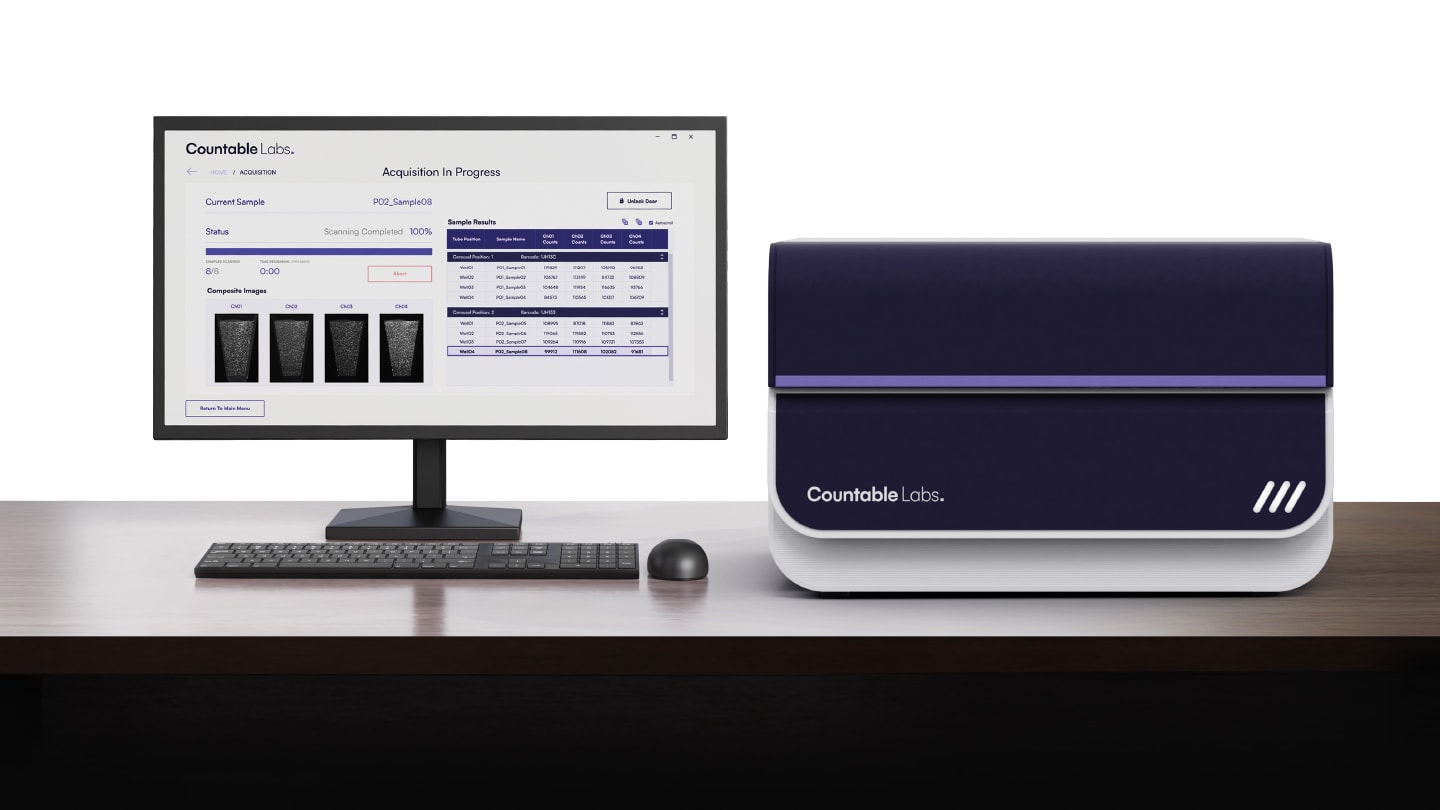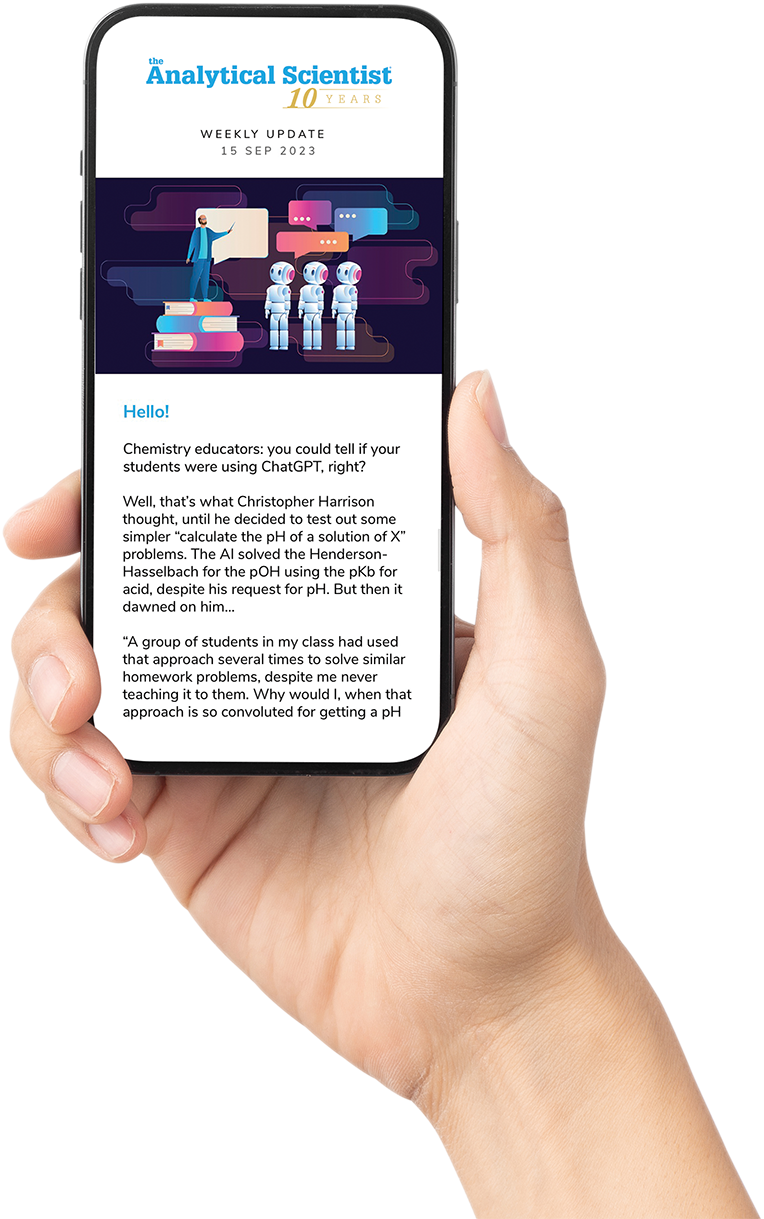
1 – Countable PCR
Single-molecule counting for unbiased genomic quantification
Produced by Countable Labs
Countable PCR is the first platform to directly count every molecule without sample loss or amplification bias, advancing precision in genomic quantification. Using 30 million reaction compartments and 3D light-sheet imaging, it achieves single-molecule measurement across a broad dynamic range. The system overcomes the limitations of qPCR and digital PCR, offering ultra-sensitive, reproducible nucleic acid detection in a simple, scalable workflow – enabling the development of more sensitive assays that can lead to earlier disease detection, faster treatment monitoring, and more accessible translational testing.
What the judges say…
“Truly innovative single-molecule counting technology bringing a new standard in the precision of PCR measurements with a very broad application range.”
“Ideal for ultra-sensitive detection of rare variants – this could become a game-changer in the near future, as the principle of operation is quite different from what is already on the market.”

Insights from CTO and co-founder Christina Fan
Please introduce yourself and your role
I’m Christina Fan, CTO and co-founder of Countable Labs. My work has always focused on building technologies that make molecular quantification accurate, accessible, and impactful. While I was a graduate student at Stanford, I co-invented the technique using molecular counting to detect fetal aneuploidy in maternal blood – an innovation that drove development of noninvasive prenatal testing (NIPT), which has since become a routine prenatal screen worldwide. That same spirit drove me and the team at Countable Labs to create Countable PCR – a new category of PCR that brings digital-level precision, affordability, and simplicity to molecular counting.
What inspired or sparked the idea behind this innovation?
Over the past decade, genomic tools have become remarkably powerful, but also increasingly complicated. We can now probe biology at incredible resolution, down to the single molecule, yet the methods for bringing those discoveries into routine, practical testing have lagged behind. I saw that contrast firsthand earlier in my career across several next-generation sequencing applications, first building NIPT and later in single cell multiomics and spatial transcriptomics. The tools for understanding disease are advancing rapidly, but the technologies used for day-to-day measurement – the tools that actually reach patients – were limited by cost, complexity, and throughput. That imbalance inspired Countable PCR. Our goal is to take the single-molecule precision of next-generation sequencing methods and develop a technology that’s simple to use, scalable, and accessible so that advanced molecular counting is as routine as running PCR.
What was the biggest hurdle you faced during development and how did you overcome it?
The challenge was translating the purity of the idea – counting every molecule directly – into a practical, manufacturable platform.
Achieving a technology platform with single-molecule precision with PCR-like simplicity required innovations around assay chemistry, instrumentation, and consumable design. We had to consider factors beyond just technical performance including usability and manufacturability. We overcame these challenges by anchoring every design decision to one guiding question: does it make counting easier and more accurate? That focus helped us strip away unnecessary complexity and deliver a tool scientists can actually use every day.

Was there a defining breakthrough or “eureka” moment that changed the course of the project?
The eureka moment was that to achieve single-molecule counting, we needed to make a deliberate decision to abandon the idea of improving on existing methods. Instead, we built Countable PCR from the ground up – starting with a clean slate.
From there, several innovations had to converge. The first was achieving true single-molecule resolution – with quantitative dynamic range practical for everyday biology – by finding a way to isolate a large number of individual DNA molecules into space and independently amplify each molecule without the cost and complexity of microfluidics. The second was developing a data-analysis method capable of processing that scale of information in minutes, not hours.
By pairing a spin-column format with light sheet imaging, we created a new architecture for high-resolution genomics that is fast, affordable, and accessible to any lab. That willingness to discard legacy assumptions became the real breakthrough.
In brief, what impact could your innovation have?
Countable PCR enables same-day, quantitative detection with sensitivity down to 0.004% variant allele frequency – roughly ten times better than current digital PCR systems. This allows for the development of more sensitive assays that can lead to earlier disease detection, faster treatment monitoring, and more accessible translational testing. By lowering cost and complexity, it brings high-sensitivity genomics to any lab – not just large sequencing centers – helping accelerate precision medicine where it’s needed most.
Did you collaborate with any external teams or partners? If so, how did those collaborations shape the final outcome?
Yes – collaborations with translational and clinical research groups were essential. Their experiences with ctDNA and MRD applications inspired the team to further innovate in many areas including assay design, throughput, and workflow, ensuring that Countable PCR addresses genuine unmet needs in oncology and molecular diagnostics.
What lessons about innovation – from this project or your career more broadly – would you like to share?
Innovation often comes from simplifying rather than complicating. In genomics, most scientists and commercial groups focus on developing the most cutting edge tools, but do not always consider the practicality and usability of the final product. I’ve seen numerous examples of amazing technologies in my career, but the ones that have been successful are those that are practical, affordable, and accessible. My goal is to empower every scientist with the best-performing tools without added barriers. This has been the theme for every genomic tool and application that I have helped innovate.
Do you find yourself driven more by scientific curiosity or the desire to make an impact?
Both. Curiosity starts the journey, but impact sustains it. Seeing an idea move from a lab bench to routine clinical use – as NIPT has – reinforces why making science accessible matters.
What’s next for your team – or for this innovation?
We’re expanding Countable PCR from four to ten colors, enabling richer multiplexing and broader utility in oncology, infectious disease, and cell and gene therapy. Our aim is to make high-plex, high-sensitivity genomics truly routine – delivering results in hours, at a cost every lab can afford.




